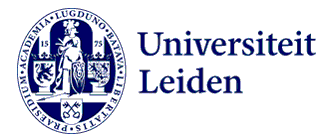Uji Kualitas (organoleptis, eber ) dan identifikasi cemaran Salmonella Sp. pada daging ayam dari pasar tradisional di Surabaya Barat
Quality test (organoleptics, eber) and identification of contaminants Salmonella Sp. on chicken from traditional markets in West Surabaya
DOI:
https://doi.org/10.46549/jipvet.v12i1.252Keywords:
Chicken meat, Organoleptic, Salmonella sp., Surabaya, Traditional market daging ayam, Organoleptis, Pasar tradisionalAbstract
Abstract
Consumption of meat is one of the efforts to fulfill protein, because protein in meat (animal protein) is more complete than protein in plants (vegetable protein). Chicken meat is consumed by more people in Indonesia than beef, because it has a more affordable price and still has high nutritional value. The high nutritional content of meat makes it an agent for the development of infectious microbes that allow food poisoning to occur. Salmonella is one of the bacteria that causes food poisoning. Infection with this bacterium in animals or humans can cause illness with disorders of the digestive tract or gastroenteritis such as stomach cramps and diarrhea that lasts four to seven days. This study used 37 samples of chicken breast which were taken from several traditional markets in West Surabaya, and analyzed descriptively. Inspection of meat quality using organoleptic test and eber, as well as bacterial contamination test salmonella sp. From this study indicate that the results showed 100% (37/37) normal meat quality testing. From the six traditional market areas that were sampled, it showed that there were 5 markets that showed positive salmonella sp. and 1 negative market. Socialization about salmonellosis disease to reduce the incidence of salmonellosis as a control effort needs to be done. Prevention of bacterial contamination of salmonella sp. can be done during maintenance until the time of processing.
Keywords: Chicken meat; Organoleptic; Salmonella sp.; Surabaya; Traditional market
Abstrak
Konsumsi daging merupakan salah satu usaha untuk pemenuhan protein, karena protein pada daging (protein hewani) lebih lengkap dibandingkan dengan protein pada tumbuhan (protein nabati). Daging ayam lebih banyak dikonsumsi oleh masyarakat di Indonesia dibandingkan daging sapi, karena memiliki harga yang lebih terjangkau dan tetap memiliki nilai gizi yang tinggi. Tingginya kandungan gizi pada daging menjadikannya sebagai agen tempat berkembangnya mikroba infeksius yang memungkinkan timbulnya food poisoning. Salmonella merupakan salah satu bakteri yang banyak menyebabkan keracunan makanan. Infeksi bakteri ini pada hewan atau manusia dapat mengakibatkan penyakit dengan gangguan pada bagian saluran pencernaan atau gastroenteritis seperti kram perut dan diare yang berlangsung empat sampai tujuh hari. Penelitian ini menggunakan 37 sampel daging ayam bagian dada yang diambil di beberapa pasar tradisional di Surabaya barat, dan dianalisis secara deskriptif. Pemeriksaan kualitas daging menggunakan uji organoleptis dan eber, serta uji cemaran bakteri salmonella sp. Dari penelitian ini menunjukkan bahwa Hasil penelitian menunjukkan 100 % (37/37) pengujian kualitas daging yang normal. Dari keenam wilayah pasar tradisional yang diambil sampel menunjukkan bahwa terdapat 5 pasar yang menunjukkan positif cemaran salmonella sp. dan 1 pasar negatif. Sosialisasi tentang penyakit salmonellosis untuk menekan kejadian salmonellosis sebagai upaya pengendalian perlu dilakukan. Pencegahan cemaran bakteri salmonella sp. dapat dilakukan saat pemeliharaan sampai saat pengolahan.
Kata kunci: Daging ayam; Organoleptis; Pasar tradisional; Salmonella sp.; Surabaya
Downloads
References
Abd El-Ghany WA. 2020. Salmonellosis: A food borne zoonotic and public health disease in Egypt. Journal of Infection in Developing Countries, 14(7), 674–678. https://doi.org/10.3855/jidc.12739
Agustina KK, Sari PH & Suada IK. 2017. Pengaruh perendaman pada infusa daun salam terhadap kualitas dan daya tahan daging babi. Bulletin Veteriner Udayana, 9(1), 34–41. https://doi.org/10.21531/bulvet.2017.9.1.34
Anderson TC, Nguyen TA, Adams JK, Garrett NM, Bopp CA, Baker JB, McNeil C, Torres P, Ettestad PJ, Erdman MM, Brinson DL, Gomez TM & Barton Behravesh C. 2016. Multistate outbreak of human Salmonella Typhimurium infections linked to live poultry from agricultural feed stores and mail-order hatcheries, United States 2013. One Health, 2, 144–149. https://doi.org/10.1016/j.onehlt.2016.08.002
Ariyanti T & Supar. 2002. Cemaran Salmonella enteritidis pada Ternak dan Produknya. Lokakarya Nasional Keamanan Pangan Produk Peternakan, 125–135.
Aryani GAD & Jember IM. 2019. Analisis Faktor Faktor yang mempengaruhi Permintaan Daging Ayam Broiler di Provinsi Bali. E-Jurnal EP Unud, 8(5), 1062–1091.
BakaraVFS, Tafsin M & Hasnudi. 2014. Analisis Bakteri Salmonella sp. Pada Daging Ayam Potong Yang Dipasarkan Pada Pasar Tradisional Dan Pasar Modern Di Kota Medan (Analysis of Bacteria Salmonella sp. on Broiler Meat in Traditional and Modern Market in Medan). Jurnal Peternakan Integratif, 3(1), 71–83.
Darmawan A, Muslimin L, Arifah S & Mahatmi H. 2020. Kontaminasi Salmonella spp pada Daging Ayam Broiler yang dijual di beberapa Pasar Tradisional di Makassar. Indonesia Medicus Veterinus, 9(2), 168–176. https://doi.org/10.19087/imv.2020.9.2.168
de Blackburn CW & McClure PJ. 2009. Foodborne Pathogens (Second edition). In Hazards, Risk Analysis and Control. Woodhead Publishing Series in Food Science, Technology and Nutrition (pp. 718–762). https://doi.org/10.1533/9781845696337.2.718
Detha A & Datta FU. 2015. Aktivitas Antimikroba Sopi Terhadap Bakteri Patogen Salmonella Typhimurium dan Salmonella Enteritidis. Jurnal Kajian Veteriner, 3(1), 17–21.
Eng SK, Pusparajah P, Ab Mutalib NS, Ser HL, Chan KG & Lee LH. 2015. Salmonella: A review on pathogenesis, epidemiology and antibiotic resistance. Frontiers in Life Science, 8(3), 284–293. https://doi.org/10.1080/21553769.2015.1051243
Höll L, Behr J & Vogel RF. 2016. Identification and growth dynamics of meat spoilage microorganisms in modified atmosphere packaged poultry meat by MALDI-TOF MS. Food Microbiology, 60, 84–91. https://doi.org/10.1016/j.fm.2016.07.003
Lee KM, Runyon M, Herrman TJ, Phillips R & Hsieh J. 2015. Review of Salmonella detection and identification methods: Aspects of rapid emergency response and food safety. Food Control, 47, 264–276. https://doi.org/10.1016/j.foodcont.2014.07.011
Midorikawa Y, Nakamura S, Phetsouvanh R & Midorikawa K. 2014. Detection of Non-Typhoidal Salmonella Using a Mechanism for Controlling Hydrogen Sulfide Production. Open Journal of Medical Microbiology, 04(01), 90–95. https://doi.org/10.4236/ojmm.2014.41010
Momani W Al, Janakat S & Khatatbeh M. (2017). Bacterial contamination of table eggs sold in Jordanian markets. Pakistan Journal of Nutrition, 17(1), 15–20. https://doi.org/10.3923/pjn.2018.15.20
Prawesthirini S, Siswanto HP, Estoepangesti ATS, Effendi MH, Harijani N, de vries GC, Budiarto & Sabdoningrum EK. 2009. Analisa Kualitas Susu, Daging, dan Telur.
Pui CF, Wong WC, Chai LC, Tunung R, Jeyaletchumi P, Noor Hidayah MN, Ubong A, Farinazleen MG, Cheah YK & Son R. 2011. Salmonella: A foodborne pathogen. International Food Research Journal, 18(2), 465–473.
Ramadhani WM, Rukmi I & Jannah SN. 2020. Kualitas mikrobiologi daging ayam broiler di pasar tradisional Banyumanik Semarang. Jurnal Biologi Tropika, Mei, 3(1), 8–16.
Sartika D. 2012. Dari Limbah Domestik Dalam Menurunkan Cemaran Salmonella P38 Indigenous Pada Sosis , Susu , Dan Air. Intitut Pertanian Bogor.
Sartika D, Susilawati & Arfani G. 2016. Identifikasi cemaran salmonella sp. Pada ayam potong metode kuantifikasi tiga pasar tradisional dan dua pasar modern di kota bandar lampung. Teknologi Industri & Hasil Pertanian, 21(2), 89–96.
Saskiawan I, Sukarminah E, Lanti I, Marta H & Nabila P. 2017. Pemanfatan Ekstrak Jamur Tiram (Pleurotus spp ) pada Penyimpanan Daging Ayam pada Suhu Ruang (26oC). Jurnal Biologi Indonesia, 13(2), 279–287.
Scallan E, Hoekstra RM, Angulo FJ, Tauxe RV, Widdowson MA, Roy SL, Jones JL & Griffin PM. 2011. Foodborne illness acquired in the United States-Major pathogens. Emerging Infectious Diseases, 17(1), 7–15. https://doi.org/10.3201/eid1701.P11101
Schmutz C, Mäusezahl D, Jost M, Baumgartner A & Mäusezahl-Feuz M. 2016. Inverse trends of Campylobacter and Salmonella in Swiss surveillance data, 1988–2013. Eurosurveillance, 21(6), 1–9. https://doi.org/10.2807/1560-7917.ES.2016.21.6.30130
Selviana N. 2018. Identifikasi Bakteri Salmonella typhi pada Daging Ayam Potong di Pasar Tradisional Citra Niaga Jombang (Issue 21).
SNI 3924:2009 Mutu karkas dan Daging Ayam, Standar Nasional Indonesia i. 2009.
Wibisono FJ. 2014. Pengujian Kualitas Daging Sapi Dan Daging Ayam Di Pasar Dukuh Kupang Barat Kota Surabaya. VITEK : Bidang Kedokteran Hewan, 1–9.
Wibisono FJ. 2017. Deteksi Cemaran Salmonella Sp. pada Ikan Bandeng (Chanos chanos) di Pasar Ikan Sidoarjo. Jurnal Kajian Veteriner, 5(June), 1–10.
Wibisono FJ & Wibisono FS. 2020. Recognition, Counseling, and Monitoring the Importance of Higiene Sanitation Against Salmonellosis Disease in Cultivator Breeders Milkfish in Segorotambak, Sedati, Sidoarjo. IGKOJEI, 1(1), 14–20.
Wong L, Selvanathan EA & Selvanathan S. 2015. Modelling the meat consumption patterns in Australia. Economic Modelling, 49, 1–10. https://doi.org/10.1016/j.econmod.2015.03.002
Yanestria SM, Rahayu A & Atina A. 2021. Nilai ph dan deteksi salmonella sp. Daging sapi di pasar tradisional dan pasar modern di wilayah surabaya timur. Vitek : Bidang Kedokteran Hewan, 11(1), 25–28. https://doi.org/10.30742/jv.v11i1.72
Yulistiani R. 2010. Studi Daging Ayam Bangkai : Perubahan Organoleptik Dan Pola Pertumbuhan Bakteri Study of Un-slaughtered Chicken Carcass : Organoleptic Changes and Bacterial Growth Pattern. Jurnal Teknologi Pertanian, 11(1), 27–36.
Yuswananda NP. 2015. Identifikasi Bakteri Salmonella sp. pada Makanan Jajanan di Masjid Fathullah Ciputat tahun 2015. Universitas Islam Negeri Syarif Hidayatullah Jakarta.
Zelpina E, Walyani S, Niasono AB & Hidayati F. 2020. Dampak Infeksi Salmonella sp . Dalam Daging Ayam Dan Produknya Terhadap Kesehatan Masyarakat. Journal Of Health Epidemiology Adn Communicable Disease, 6(1), 25–34.
Downloads
Published
How to Cite
Issue
Section
License
Copyright (c) 2022 Freshinta Jellia Wibisono, Adhitya Yoppy Ro Candra, Mohammad Exceltyanto Widodo, Arief Mardijanto, Sheila Marty Yanestria

This work is licensed under a Creative Commons Attribution-NonCommercial-ShareAlike 4.0 International License.
License and Copyright Agreement
In submitting the manuscript to the journal, the authors certify that:
- They are authorized by their co-authors to enter into these arrangements.
- The work described has not been formally published before, except in the form of an abstract or as part of a published lecture, review, thesis, or overlay journal. Please also carefully read Jurnal Ilmu Peternakan dan Veteriner Tropis (Journal of Tropical Animal and Veterinary Science) Posting Your Article Policy at https://journal.fapetunipa.ac.id/index.php/JIPVET/publicationethics
- That it is not under consideration for publication elsewhere,
- That its publication has been approved by all the author(s) and by the responsible authorities “tacitly or explicitly“ of the institutes where the work has been carried out.
- They secure the right to reproduce any material that has already been published or copyrighted elsewhere.
- They agree to the following license and copyright agreement.
Copyright
Authors who publish with Jurnal Ilmu Peternakan dan Veteriner Tropis (Journal of Tropical Animal and Veterinary Science) agree to the following terms:
- Authors retain copyright and grant the journal right of first publication with the work simultaneously licensed under a Creative Commons Attribution License (CC BY-NC-SA 4.0) that allows others to share the work with an acknowledgment of the work's authorship and initial publication in this journal.
- Authors are able to enter into separate, additional contractual arrangements for the non-exclusive distribution of the journal's published version of the work (e.g., post it to an institutional repository or publish it in a book), with an acknowledgment of its initial publication in this journal.
- Authors are permitted and encouraged to post their work online (e.g., in institutional repositories or on their website) prior to and during the submission process, as it can lead to productive exchanges, as well as earlier and greater citation of published work.

This work is licensed under a Creative Commons Attribution-NonCommercial-ShareAlike 4.0 International License.





























.png)
